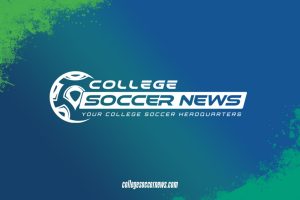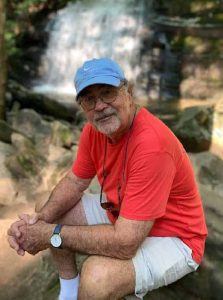As the World Cup comes around every four years, there are always questions about U.S. Soccer in terms of development. Are we on par with the rest of the world? Is our current youth development system progressing our country's players? And in recent years we've heard, is college soccer still an adequate form of finding and developing taltent? For the last question, many see college soccer as a dying form of development, but that couldn't be further from the truth.
As the top-level youth players from America grow up, there are more and more options every year for these players to choose from. Ever since the Development Academy was introduced to U.S. youth soccer in 2007, all of the current MLS teams have created their own academy side to compete in the league which features 79 of the top clubs in the country. This allows youth players to skip the college route and go straight to the pros. Many of the players (i.e. Junior Flores, Rubio Rubin, Paul Arriola, etc.) test the international waters, latching on to a foreigh club attempting to make it through their academies.
But for a majority of our countries top players they side with the collegiate route. Some players need the four years in college to fully develop into a professional prospect (i.e. Matt Besler). Many tend to believe college soccer is a secondary path to the national team, but statistics show otherwise. Out of the over 6,000 division one and over 23,000 NCAA men's soccer student athletes in total, 1.9% end up playing professional, thus proving college soccer is more than a stepping stone for the next level.
The past U.S. World Cup squads further prove that college soccer is still a tool in developing young players. The 2006 USA squad had 17 players that at some point played college soccer for an NCAA program, including nine out of the eleven starters. Only four years ago, the 23-man roster of our 2010 squad in South Africa included 15 players who played college soccer. Eight years after the creation of the development academy, college soccer is still going strong as 14 players from our 30 man preliminary roster played for a collegiate side. Of the 23 to make the trip to Brazil, 10 are NCAA alumnus, eight of which have seen minutes, only three games into the World Cup. The two which haven't, Brad Guzan and Nick Rimando, are both back up goalkeepers.
College Soccer News now takes a look at the ten players from this year's USA World Cup roster who have played for an NCAA side prior to their professional careers.
DeAndre Yedlin (Akron) – Yedlin, the most recent college player on the roster, was playing college ball just two years ago. The midfielder, turned outside back by Caleb Porter was a revelation at Akron. An AK-Rowdies fan favorite he was ranked by College Soccer News as the number 12 recruit in the country back in 2011. Yedlin, a two-time First Team All-MAC member would've been a top five pick in the MLS SuperDraft if not for signing a homegrown contract with the Seattle Sounders. The speedster was a surprise call-up into the preliminary World Cup camp, but thus far has impressed making a positive impact in his two substitution appearances.
Graham Zusi (Maryland) – Zusi, the former Terps captain has been a key part of the national team during this World Cup cycle. A box-to-box midfielder by trade, the Sporting KC captain has played an outside midfield role under Klinsmann. At College Park, Zusi was the playmaker in the legendary 2008 Maryland National Championship team. So far in Brazil, Zusi has started two games for the Yanks and has contributed two impressive assists for the team.
Omar Gonzalez (Maryland) – Gonzalez, a 6' 5" center back has continued his rise to stardom since leaving Maryland. The former U.S. youth international excelled under Coach Cirovski at Maryland winning nearly ever award possible including being named a First Team All-American. After three stellar years at Ludwig Field, the towering defender was selected 3rd in the MLS SuperDraft by the LA Galaxy. Since then, Gonzalez has been a consistent starter. This World Cup, Gonzalez has made two appearances, one as sub against Portugal and the other a very solid 90-minute performance against Germany.
Alejandro Bedoya (Fairleigh Dickinson/Boston College) – Bedoya, a quick winger is one of the four-year college players on the squad. He recorded 34 points in two years at Fairleigh Dickinson before transferring to Boston College. As a Golden Eagle, Bedoya was a two-time College Soccer News All-American and a Hermann Trophy semifinalist. The New Jersey native took the international route attempting to make it overseas. After a successful club season in Sweden, Bedoya was called into the 2010 World Cup camp before being one of the seven cut prior to South Africa. Bedoya has since become a regular starter with United States appearing in all three games in Brazil, starting two.
Nick Rimando (UCLA) – Rimando, an unbelievable shot stopper, is one of the many top goalkeepers to play for the Bruins. The 5' 11" netminder played three years in college, including being on the 1997 National Championship team under Sigi Schmid, before signing a Project 40 contract. Rimando earned his first cap in 2002 but didn't regain major time until 2009. Under Klinsmann, Rimando has regained significant playing time as the third string goalkeeper. As the second oldest player on the roster, Rimando, yet to play, is likely participating in his lone World Cup.
Matt Besler (Notre Dame) – Besler, a four-year player for the Irish is a perfect example of the rise from College Soccer to the professional ranks. The left footed center back was never part of a youth national team setup and was one that needed the four years in South Bend to become the outstanding player he is today. The Scholar All-American Player of the Year made 90 appearances in college before being drafted eighth overall by the Kansas City Wizards (now Sporting KC). Since winning 2012 MLS Defender of the Year, Besler has arguably been the best defender in the national team pool. So far in Brazil, the former Irish defender has started in all three group stage games performing well.
Clint Dempsey (Furman) – Arguably the best player on this year's U.S. World Cup roster, Dempsey was another three year player in college. The Texas born native recorded 53 points as a Paladin while earning Second Team All-America honors. In 2004 "Deuce" was drafted eighth overall by the New England Revolution where he would stay for three seasons. Since 2004, Dempsey has been one of the key players for the national team. This is Dempsey's third World Cup, and against Ghana he became the first American to score in three consecutive World Cups. As captain, Dempsey has been playing lone forward and is without a doubt one of the most crucial players in continuing our run.
Chris Wondolowski (Chico State) – "Wondo" defines the cliche' of climbing the ladder. Wondolowski was a track star in high school and received many offers for track, but only one for soccer, a small Division II school named, Chico State. As a Wildcat, the forward notched 39 goals in his four years. He went on to be drafted 41st overall by the San Jose Earthquakes. Nearly ten years later, the "track star" has 84 MLS goals to his name and has a share of the record for most goals scored in a season (27). Klinsmann gave Wondolowski a chance in the Gold Cup, where he stood out scoring five goals in the tournament. Ever since, Wondolowski has been pushing for 1st team minutes and after a surprise World Cup call-up, the player that nearly nobody wanted made an appearnace on the world's biggest stage.
Geoff Cameron (West Virginia/Rhode Island) – Cameron, a defensive midfielder converted to defender is yet another four year player on the team. After earning nine points in 38 appearances at West Virginia, he transferred to the University of Rhode Island for his last two years of eligibility. After two impressive seasons with the Rams, including being named the the Atlantic-10 Midfielder of the Year in his senior campaign, Cameron was drafted by the Houston Dynamo, 42nd overall. Two seasons into his MLS career, the versatile Cameron earned his first national team cap. Four years later after a move to the EPL, Cameron has become a consistent starter for his club and country. This World Cup, Cameron has started in two of the games with mixed performances.
Brad Guzan (South Carolina) – Guzan, a 6' 4" animal between the pipes was exceptional at South Carolina. The U.S. youth national teamer was a starter as a freshman for the Gamecocks and was a College Soccer News All-Freshman Team selection. As a sophomore Guzan was named team captain and at the conclusion of the season was honored as a Second Team All-American. Guzan signed a generation adidas contract with the league in 2005 and was picked 2nd overall in the draft by Chivas USA. Only a year later, Guzan cemented his spot as Tim Howard's backup, a position he's kept ever since. Guzan is the backup netminder at this World Cup, but don't be surprised if he's the starter in 2018.
 Ben Roth is a contributing writer for College Soccer News. He can be reached via e-mail at Ben.rothpd16@gmail.com
Ben Roth is a contributing writer for College Soccer News. He can be reached via e-mail at Ben.rothpd16@gmail.com




